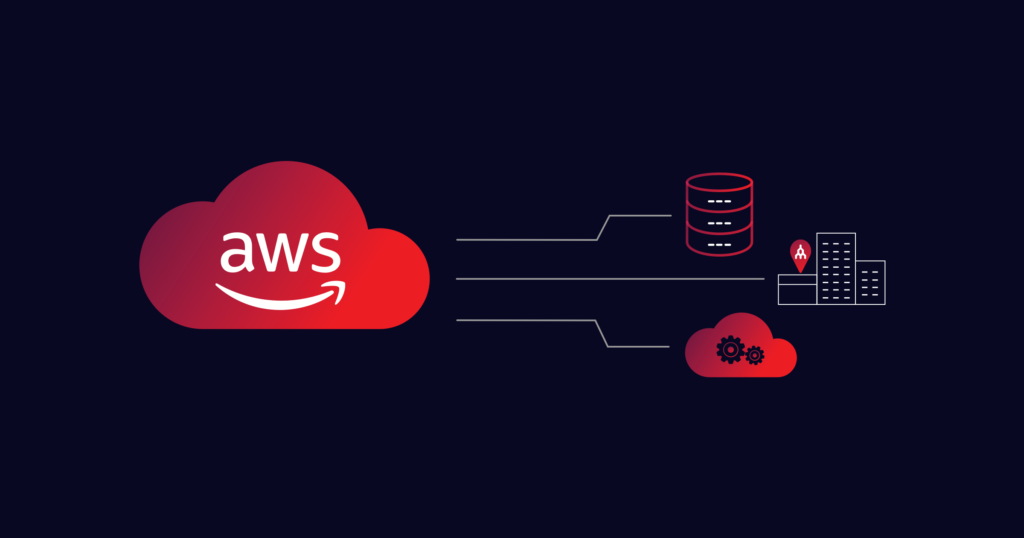
Three Reasons You Should Interconnect Your Clouds
- Cloud networking
- June 20, 2022
- RSS Feed
Having multiple cloud providers alone isn't enough to future-proof your business. Here's why your next step should be to interconnect your clouds.
A Megaport blog reports: “Gartner estimates the average cost of downtime for a business can be as much as USD$5,600 per minute.” When you’re working in a multicloud environment, this cost only multiplies. Downtime can be caused by—and lead to—a range of latency and security issues, as well as a flow-on cost that affects the bottom line of your business.
In an era of remote workforces, rampant cybercrime, and impatient customers, how can you mitigate risk, improve performance, and protect your reputation across your clouds? The simplest (and best) way is to privately interconnect your clouds – in other words, adopt cloud-to-cloud routing.
Here are three key benefits to having an interconnected multicloud network that will improve your productivity, your reputation, and your bottom line.
Learn about how Megaport Cloud Router (MCR) privately interconnects your multicloud network.
1. Reduce network latency and improve performance

Think of irritants we’ve all experienced, such as dropped video conferencing calls or audio troubles, delays in mobile payments, or the “spinning wheel” as software updates are slow to download. Consumers and clients are impatient, and any delay might cause them to leave your site; or your employees might get frustrated, which could lower their productivity.
Network latency looms behind how your enterprise functions, whether promoting your latest digital prints to consumers, updating seat availability at a sports arena, trading cybercurrency, or operating emergency response services. Latency affects how quickly a user or system receives your data, and vice versa, and can influence the public perception of your enterprise. It refers to the delay in time for information to travel, which is a matter of physics: It’s the speed at which a device makes and receives requests through wireless or hardware-based routers and wireless connections. Latency increases by the number of hops between routers or satellite-ground hops, and is worsened by the “competition” among huge amounts of data transmitted daily when on the public internet.
Learn more about the real cost of high network latency – and how to avoid it.
A multicloud network that isn’t interconnected means data travelling between clouds will have to do what is known as hairpinning: travelling via a data center or remote midpoint, adding hops and slowing your network down. When paired with use of the public internet, where you’re impacted by traffic fluctuations and redundancy issues, the result is impaired network performance for your entire business.
For end users, latency issues crop up when someone sees a buffering message. Servers and devices break up data into smaller chunks to process it, and buffers store these “chunks.” Similar to a crowded airfield and limited runways, the data “waits” to be transmitted. Most people who see a buffering message get quickly frustrated and don’t understand or care about the technical issues – they put the blame elsewhere.
Bandwidth is important, but latency (speed) is also crucial in supporting users’ need for almost instant gratification – and your business’ need for efficient operations. Selectra makes the analogy: “Bandwidth is the equivalent of the maximum volume of water the pipe can carry and latency equates to the time it takes the water to travel the length of the pipe.” The higher the bandwidth, the faster the speed of download and upload, and a low latency rate means data is delivered quickly.
Consider these stats:
- Abandonment rates shoot up to 87% if there’s a 2-second delay in loading.
- In 2022, Google strives for a load time of half a second.
- People won’t return to websites that take more than 4 seconds to load, and will form a bad impression of the company.
- People tend to abandon the checkout process due to delays – they get distracted and begin surfing other online stores.
With a virtual cloud router like Megaport Cloud Router (MCR), enterprises transmit and receive data through a Virtual Cross Connect (VXC) provisioned near cloud on-ramps. They then get a private, dedicated line between their clouds, routing data among leading providers and platforms. This high-speed, efficient flow of data lowers latency and improves network performance almost instantly.
2. Optimize cost through economies of scale

When the pandemic hit, many enterprises were forced to shift quickly to offsite workforces, and their cloud storage and delivery needs busted budgets. Flexera’s 2020 State of the Cloud Report shares sobering survey results. Respondents stated that they were “over budget for cloud spend by an average of 23 percent – and expect cloud spend to increase by 47 percent next year,” and worse yet, “30 percent of cloud spend is wasted.” In the Flexera 2022 State of the Cloud Report, respondents say this trend of cloud waste hasn’t abated. The top priority of more than 700 survey participants is to optimize the use of the cloud – and a solution is increasingly using multicloud.
The desire to diversify clouds is reflected in a survey conducted by VMware. Its FY22 H2 Benchmark Study on Digital Momentum reports that 73% of enterprises in the survey use two public clouds, 26% use three or more, and 81% of participants plan to use multicloud services by 2024. Facundo Navarro at DevOps.com states that a multicloud strategy can “allow you to optimize costs when implemented correctly.” It’s a strategic way to avoid vendor contracts with conditions and terms that may not always meet your changing circumstances. Instead, you’re using the best of what multiple providers offer.
As more multicloud solution vendors come on to the market, they are competing with each other on a global scale, which can benefit your company. You can comparison-shop options and look for features such as “payment flexibility, adjustable contracts, and customizable capacity.”
A virtual cloud routing service from a Network as a Service (NaaS) provider is an ideal option for privately interconnecting your clouds with far better control over and management of your services in one place. Your company probably has data streams with differing security needs, purposes, or urgency. If you adopt an interconnected cloud network, your data streams can be easily farmed out to and shifted between different providers based on your needs and the providers’ specialties, or strengths. To integrate with Microsoft business apps, for instance, Azure could be used, and your retail data could be sent to Google Cloud where Big Data can analyze trends.
Multicloud routing solutions simplify management and optimize costs associated with moving data between clouds by shortening hops (that latency-improving factor). Plus, by interconnecting your clouds and managing connectivity through the right vendor, you won’t need to scramble among vendors, evaluating each contract, or be stuck with a contract that has ballooning costs for high data usage; you’ll be able to scale your connections up and down on demand, and only pay for what you use.
3. Enhance security through direct, private peering

Besides data breaches caused by cybercriminal activity, enterprises face calamity during emergencies, whether simple power outages, software or hardware malfunctions, or natural disasters. But with a private cloud-to-cloud routing solution, redundancies are built-in. This means data and application recovery can happen more quickly and with lower costs.
Choosing to directly connect to the cloud through a private connection instead of via the public internet means security risks are drastically minimized – and the same is true for connecting between clouds. By using private cloud-to-cloud routing, you can protect your data from cyberattacks and shorten its time in transit, as well as reduce redundancy incidents. Once your data reaches each provider, it will be channeled through their high-level security filters. They need to protect their infrastructure, so their security will be top of the line and frequently updated.
MCR provides this level of network underlay, routing enterprise data virtually among providers and platforms without hairpinning back to a data center. By using VXCs on Megaport’s private Software Defined Network (SDN) to bypass the public internet, MCR allows you to privately peer between public cloud, Infrastructure as a Service (IaaS), and Software as a Service (SaaS) providers. Through one main connection, multiple cloud interactions are working seamlessly behind the scenes.
MCR lets enterprises use software-defined networking’s inherently secure features at scale, which also brings heightened security. “By using a virtual cloud router with a NaaS provider, as opposed to unsecure and unreliable public internet, you can safely and easily connect your clouds to each other for easier multicloud networking.”
Even if you only have two or three providers in your multicloud network now, interconnecting your clouds will benefit your business for years as you expand your architecture. Improving your network performance, making your network easier to manage, and better protecting your data, an interconnected cloud network ultimately gives you a more productive and profitable business.

Multicloud connectivity solutions, all in one place – find the one best for you here.


